Today’s Current Affairs: 30th May 2023 for UPSC IAS exams, State PSC exams, SSC CGL, State SSC, RRB, Railways, Banking Exam & IBPS, etc
Table of Contents
Supermassive Black Hole In GS-9209:
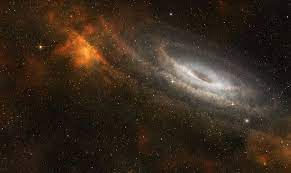
Astronomers have uncovered an extraordinary secret hidden within the depths of an ancient galaxy.
- At its core lies a supermassive black hole.
- This remarkable finding offers fascinating insights into the nature of galaxies and the pivotal role of these celestial behemoths.
- The discovery of a supermassive black hole challenges our previous understanding and adds a new dimension to our knowledge of these enigmatic cosmic entities.
- The size of the detected black hole is five times larger than what scientists had initially predicted based on the number of stars in the galaxy.
- This unexpected revelation amplifies the fascination surrounding GS-9209 and its central black hole.
- GS-9209 stands out among its cosmic counterparts due to its distinctive characteristics.
- While boasting a similar number of stars to our own Milky Way, this ancient galaxy has ceased the formation of new stars.
- At its core resides a colossal and immensely powerful black hole.
Mohenjodaro’s Dancing Girl:
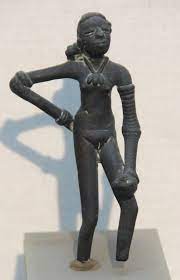
The mascot of International Museum Expo 2023 was inspired by Dancing Girl Sculpture.
- Mohenjodaro’s Dancing Girl Discovered in 1926 (by British archaeologist Ernest McKay) during excavations at Mohenjodaro, a major site of the Indus Civilization.
- Over 4,500 years old, belonging to the Harappan period (3300-1300 BC).
- Made of bronze, a metal alloy consisting primarily of copper.
- Appearance Depicts a nude female figure with multiple bangles and a necklace.
- Strikes a pose with a hand on her hip, legs slightly forward, and a lively and spirited stance.
- Artistic Sophistication Represents the high level of artistry and metallurgy in the Harappan civilization, showcasing the knowledge of metal blending and lost-wax casting techniques.
- Historians differ in interpreting the figurine’s purpose: some consider her a dancer, while others suggest she could represent a woman carrying an offering.
- The figurine is an object of symbolic and aesthetic value, highlighting the presence of high art in Harappan society.
- The Dancing Girl is a significant artefact of the Indus Civilization, offering insights into the artistic and cultural practices of the time.
- Currently housed in the National Museum of India, serving as a prominent exhibit in the Indus Civilization gallery.
Coin Of Rs.75 Denomination:

Prime Minister Narendra Modi unveiled a commemorative coin of Rs 75 denomination. Commemorative coins have been issued by India since the 1960s for various purposes, such as honoring notable personalities, creating awareness about government schemes, or commemorating significant historical events.
- The newly released Rs 75 coin features a circular shape with a diameter of 44mm.
- It is composed of a quaternary alloy, comprising 50% silver, 40% copper, 5% nickel, and 5% zinc.
- The face of the coin displays the Lion Capitol of Ashoka Pillar at the center, with the inscription Satyameva Jayate below it.
- The word Bharat in Devnagri script is placed on the left periphery, while “INDIA” in English is positioned on the right periphery.
- On the other side, an image of the new parliament building is featured, with “Sansad Sankul” inscribed in Devanagari script on the upper periphery and “Parliament Complex” in English on the lower periphery.
NITI Aayog’s Annual Health Index 2020-21:

Kerala, Tamil Nadu and Telangana emerged as the top performers among the ‘larger states’ in the NITI Aayog’s annual ‘health index’ for the Covid year of 2020-21.
Highlights of the Index:
- Among the 19 ‘larger states’, Kerala, Tamil Nadu and Telangana have occupied first, second and third place respectively, in terms of overall performance.
- Bihar (19th), Uttar Pradesh (18th) and Madhya Pradesh (17th) are at the bottom of the list.
- Among the eight smaller states, Tripura has recorded the best overall performance, followed by Sikkim and Goa; Arunachal Pradesh (6th), Nagaland (7th) and Manipur (8th) are at the bottom.
- And among the eight UTs, Lakshadweep has been ranked as the top performer in terms of overall performance, while Delhi ranked at the bottom.
- Rajasthan, Uttarakhand and Odisha emerged as the top three performers in 2020-21, as compared to their performance in 2019-20.
NITI Aayog’s Annual Health Index:
- In 2017, the National Institution for Transforming India (NITI Aayog) in collaboration with the Ministry of Health and Family Welfare (MoHFW) and the World Bank initiated an annual Health Index for tracking Overall Performance and Incremental Performance across all states and Union Territories (UTs).
World Menstrual Hygiene Day 2023 : Theme

On the occasion of World Menstrual Hygiene Day, Child Rights and You (CRY) an NGO released the findings of a study conducted to assess the awareness and knowledge of menstrual hygiene and health among adolescent girls in India.
- The study conducted for two months with the participation of nearly 4,000 girls aged 10-17 years from 38 districts across the country, sheds light on the perceptions, practices, and challenges faced by young girls regarding menstruation.
- World Menstrual Hygiene Day, also known as Menstrual Hygiene Day, is an annual global advocacy day celebrated on May 28th.
- The day aims to raise awareness and promote good menstrual hygiene management (MHM) practices worldwide.
- Menstrual Hygiene Day is observed on the 28th day of the fifth month.
- Represents the average length of the menstrual cycle, which is often around 28 days.
- Symbolizes the average duration of menstruation, which lasts around five days each month.
- Started in 2013 by Germany-based NGO WASH United.
- Initially launched as a 28-day social media campaign to raise awareness about menstruation.
- Positive response led to the establishment of Menstrual Hygiene Day on May 28, 2014.
- Theme for 2023: “Making menstruation a normal fact of life by 2030.”
IRDAI Vision 2047:

The Insurance Regulatory and Development Authority of India (IRDAI), as part of its Vision Insurance for all’ by 2047, has allotted states and union territories to every insurer to increase insurance penetration in India.
- IRDAI is also planning to launch Bima Trinity – Bima Sugam, Bima Vistar, Bima Vaahaks – in collaboration with general and life insurance firms to make insurance activities hassle free.
- Insurance for All by 2047 aims that every citizen has an appropriate life, health and property insurance cover and every enterprise is supported by appropriate insurance solutions.
- It also aims to make the Indian insurance sector globally attractive
- It can help people in households all over the country to have access to an affordable insurance policy that covers health, life, property, and accidents.
- These policies would offer faster claim settlements, sometimes within hours, and additional benefits like gym or yoga memberships.
Nato Plus : Including India
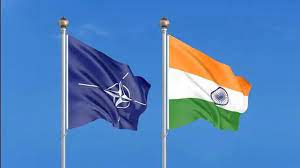
A US Congressional Committee recently recommended strengthening Nato Plus by including India in the five-member grouping.
- Nato Plus is a grouping of the North Atlantic Treaty Organization (NATO) and five countries, including Australia, New Zealand, Japan, Israel, and South Korea.
- The group works toward boosting global defence cooperation.
- India would gain access to seamless intelligence sharing between these countries.
- India would get access to the latest military technology without much of a time lag.
- It would further strengthen India’s defence partnership with the United States.
North Atlantic Treaty Organization (NATO):
- It is a transatlantic alliance of 31 like-minded North American and European countries.
- It was established by the North Atlantic Treaty (also called the Washington Treaty) on April 4, 1949.
- Aim is to protect peace and to guarantee the territorial integrity, political independence and security of the member states.
Gomphonema Rajaguruii: New Freshwater Diatom Species

Researchers at the Pune-based Agharkar Research Institute (ARI) recently discovered a new species named Gomphonema rajaguruii from the northern Western Ghats.
- It is a new freshwater diatom species.
- It was found in a semi-aquatic environment along the wet walls in Maharashtra’s popular hill station, Mahabaleshwar in Satara District.
- It was named after a veteran geo-archaeologist from the city, the late Professor S N Rajaguru.
- It is unique because it shows the characteristics of two genus – Gomphonema and Gomphoneis.
- Diatoms is a photosynthetic, single celled organism.
- They are a major group of algae and form one of the most common forms of phytoplankton.
- They are found in almost every aquatic environment including fresh and marine waters.
- Diatoms have cell walls made of silica, Each species has a distinct pattern of tiny holes in the cell wall (frustule) through which they absorb nutrients and get rid of waste.
Powassan Virus : First Fatal Case

A person in the US recently died from the rare Powassan virus, marking the first fatal case in the US this year.
- Powassan Virus Disease is a rare, yet often serious disease that is spread by the bite of infected ticks.
- The Powassan virus, often called a ticking time bomb, is named after Powassan, Ontario where it was first discovered in 1958.
- Not all ticks carry these viruses and not all people bitten by a tick will get sick.
- A tick needs to be attached to a person for a certain length of time before it can cause disease.
- People in the initial days can experience symptoms of fever, headache, vomiting, and weakness.
- The virus can further cause brain infection (encephalitis) or form the membranes around the brain and spinal cord (meningitis).
- In severe cases, patients can suffer from confusion, loss of coordination, difficulty speaking, and seizures.
- There are no medications to prevent or treat Powassan virus infection.
- Rest, fluids, and over-the-counter pain medications may relieve some symptoms.
One District One Product Gifts:
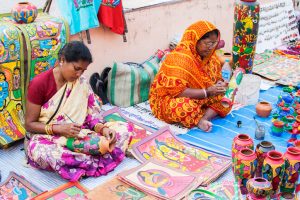
The Ministry of Youth Affairs and Sports is presenting Khelo India University Games (KIUG) winners with ‘One District One Product’ gifts.
- One District One Product (ODOP) Initiative was launched by the Ministry of Food Processing Industries in 2018.
- Objective is to help districts reach their full potential, foster economic and socio-cultural growth, and create employment opportunities, especially, in rural areas.
- The initiative aims to select, brand, and promote at least One Product from each District of the country for enabling holistic socioeconomic growth across all regions.
- ODOP Initiative aims to turn every district in India, into an export hub through promotion of the product in which the district specialises.
- The initiative plans to accomplish this by scaling manufacturing, supporting local businesses, finding potential foreign customersand so on, thus helping to achieve the ‘Atmanirbhar Bharat’ vision.
- The ODOP Initiative has identified a total of 1102 products from 761 districts across the country.
- This initiative is carried out with the ‘Districts as Exports Hub’ initiative by the Directorate General of Foreign Trade (DGFT), Department of Commerce.
Rice Fortification : Study
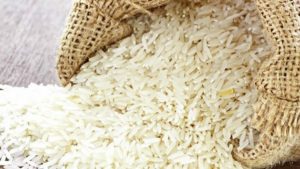
India’s pilot studies on rice fortification showed that nutritional anaemia could be reduced, with a significant drop in the prevalence of anaemia among schoolchildren, according to a United Nations report.
- Rice fortification is the process of adding Fortified Rice Kernels (FRK), containing FSSAI prescribed micronutrients (Iron, Folic Acid, Vitamin B12) to normal Rice in the ratio of 1:100 (Mixing 1 Kg of FRK with 100 Kg custom milled rice).
- Fortified rice is nearly identical to traditional rice in aroma, taste, and texture. This process is done in the rice mills at the time of milling of rice.
- Fortification of rice is found to be a cost-effective and complementary strategy to increase vitamin and mineral content in diets with low turnaround time (TAT) and a step towards nutritional security.
- On 15 August 2021, when Prime Minister on India announced that over 80 crore people will be fed rice fortified with iron and vitamins to combat rising cases of anaemia and other micronutrient deficiency diseases.




